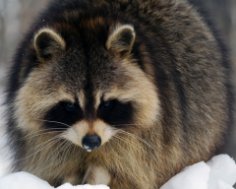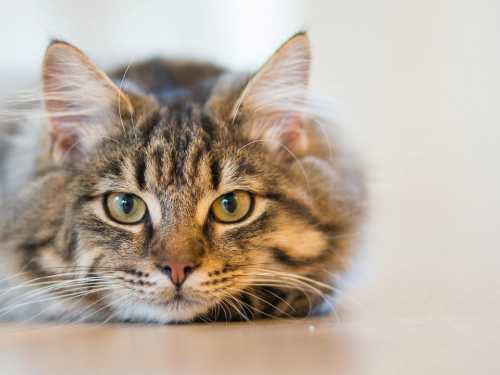
And really, what do we know about this little animal? Did you know, for example, that raccoon dogs can sing? Surely you've never heard of it before…
It's no surprise that we know little about this animal. After all, until recently, the raccoon dog lived within our country only in the lower Amur and Ussuri regions, and was only introduced to European regions in the 1950s.
The true homeland of this animal is the forested and mountainous regions of China, Japan, Indochina and the Korean Peninsula.
10,000 individuals of these predatory animals of the canine family were imported from the 1920s to the 1950s into 76 regions of our former USSR with the aim of enriching hunting grounds with commercial fur animals.
It seemed that the expansion of its habitat and acclimatization in the European part, where it subsequently bred quite quickly, was beneficial from all sides: the animal's fur, although coarse, was inexpensive and warm, was in demand, its survival rate and ability to adapt to various conditions, as well as fantastic fertility, spoke in favor of the animal's dispersal throughout Russia and adjacent regions.
But despite all these advantages, the flip side of the coin turned out to be less than appealing. The raccoon dog proved itself a true nocturnal robber, sparing no one on its hunting trail . Instead of a new game animal, the hunting grounds acquired a dangerous, voracious predator, sweeping away everything in its path—small animals, frogs, and any young—both birds and animals, destroying the nests of both land and waterfowl, game and game birds—pheasant, hazel grouse, wood grouse, black grouse, and others.
The raccoon dog is small in size – slightly smaller than a common fox. Its body length is 65-80 cm, its tail 15-25 cm, and its weight is 4-10 kg. Its body is stocky and compact, its legs are short, and its head is small, with a pointed muzzle and short ears.
In appearance, the animal is similar to a raccoon, and is sometimes called the “Ussuri raccoon,” but, oddly enough, there is no family connection between them .
They share long, thick, and fluffy dark brown fur (only the raccoon dog has coarser fur), as well as a distinctive “mask” on the face framed by wide black sideburns and black spots around the eyes. However, the raccoon dog's short or medium-length, fluffy tail lacks the transverse stripes of the common raccoon.
The raccoon dog prefers to nest along riverbanks and bodies of water, and even better, in damp meadows with swampy lowlands and coastal forests with dense undergrowth. Unlike the raccoon, which chooses higher habitats—in the hollows of old trees, in burrows, and in rock crevices—at heights of up to 20-30 meters above ground, this animal, due to its clumsiness, cannot climb high, and therefore nests lower down: in badger and fox burrows, in ravine alcoves, under tree roots. Sometimes, if nothing suitable is available, it digs a regular burrow itself—up to 3 meters deep, with one or two exits.
These burrows are most often found on the slopes of ravines, along the banks of ditches, and along the banks of rivers, lakes, and swamps. They can even nest near roads and villages.
This omnivorous predator hunts at dusk and at night, meticulously exploring and combing the most secluded places in search of food – it wanders on land, and in shallow rivers, and along the sea coast, hunting with equal success for mouse-like rodents and insects, amphibians and birds, fish and reptiles, does not disdain carrion and food waste, eats leaves, stems, seeds, bulbs, rhizomes and fruits of many plants.
It can even dig up dead animals from the ground and will even eat dead fish washed up on the shore. It also enjoys oat grains. Thus, in search of food, the animal can travel up to 7-10 km per night, unlike the raccoon, which only wanders within a radius of 1.5 meters from its shelter.
A raccoon dog can also go swimming to feast on fish – they are excellent and strong swimmers.
In winter, of course, due to the deep snow, animals can't afford such long treks and walks, as their short legs get stuck. That's why they try to fatten up as much as possible during the summer—during this period, their weight increases by 2 kg or more—so they can sleep peacefully in their burrows, hibernating on the reserves of subcutaneous fat.
This is the only member of the canine family that hibernates during the winter. However, their sleep is shallow and intermittent. They remain in their den during severe frosts, snowstorms, and blizzards—sometimes for many days at a time. During mild winters and thaws, the animals are usually awake , emerging from their dens and feeding nearby. Although raccoon dogs do not undergo true hibernation, their metabolic rate during this period decreases by approximately 25%.
In their burrows and dens, the animals live in pairs, which form in the fall—in October-November—so their rut, which begins in February-April, is rarely accompanied by fights between males. After all, by this time, almost all of them have already decided on their “personal life plans,” and they have absolutely no reason, nothing, or anyone to share.
The loving couples sit quietly in their burrows and admire each other.
As a result, the young couple gives birth to their babies in April-May, in the spring. Females gestate for about 60 days. A litter typically consists of 6-7 puppies, but with a well-fed and abundant diet, 14-16 puppies are possible, which is not uncommon among raccoon dogs, whose fertility depends on their body condition and weather conditions.
Both parents participate in raising and feeding the young. Young puppies grow quickly and reach adult size by late autumn. They reach sexual maturity at 8-10 months.
In the wild, these animals live for 3-4 years, but in captivity, they can live up to 11 years. Their short lifespan in the wild is explained by the fact that this small animal has many enemies. Many of them are killed by wolves, lynxes, foxes, and stray dogs. When threatened, the raccoon dog prefers not to fight, but rather lies low, feigning death. This sometimes helps it escape death, but is often its last resort.
Mass mortality among these animals is also caused by epizootics of the dreaded (and human-specific) disease piroplasmosis, a parasitic blood disease. Raccoon dogs are sometimes carriers of the rabies virus, which can also cause mortality.
But where's the singing?! you ask. Where in this general, dry official data is there any information about such an extraordinary animal trait as the ability to sing?
Yes, that is why we do not know any interesting, “fairytale” details about this animal, like, for example, about the inhabitants of our forests that we all know from childhood – the hare, the fox or the bear, because the raccoon dog is an animal, as has already been said, not ours, unfamiliar to us.
But in Japan, where people have lived alongside these cute little creatures for millennia, a whole cult of the “tanuki”—the raccoon dog—has developed. Legends and fairy tales are told about the “tanuki,” it's kept as a pet, a variety of the national Japanese dish, sushi, is named after it, and of course, in the Land of the Rising Sun, everyone knows that the tanuki can sing!
But more about that in the next article .





